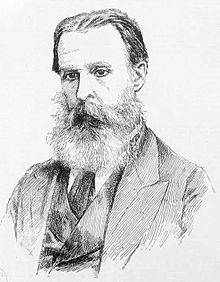John Coode (engineer)
|
Sir John Coode KCMG |
|
|---|---|

A woodcut of John Coode made after his death
|
|
| Born | 11 November 1816 Bodmin, Cornwall |
| Died | 2 March 1892 (aged 75) Brighton, East Sussex |
| Nationality | English |
| Engineering career | |
| Discipline | Civil, |
| Institutions | Institution of Civil Engineers (president), |
| Projects | Melbourne Port and River improvements, |
Sir John Coode KCMG (11 November 1816 – 2 March 1892), English civil engineer, known for harbour works.
He was born at Bodmin on 11 November 1816. He was educated at Bodmin Grammar School and after leaving school entered his father's office. His natural tastes, however, were not for law but for engineering ; he was therefore articled to James Meadows Rendel of Plymouth, and on completion of his pupilage he worked for some years for that gentleman and on the Great Western Railway.
In 1844, he set up in business for himself in Westminster as a consulting engineer, and remained there till 1847. In that year he was appointed resident engineer in charge of the great works at Portland harbour, which had been designed by Rendel. On the death of the latter in 1856, Coode was appointed engineer-in-chief, and retained that post until the completion of the work in 1872. This harbour provided the largest area of deep water of any artificial harbour in Great Britain, and was a work of the utmost national importance. The first stone of the great breakwater was laid by the prince consort on 25 July 1849, and the final stone was put in place by the prince of Wales in 1872, the work having therefore taken twenty-three years to complete and having cost about a million sterling. The honour of knighthood was conferred upon Coode in 1872 for his services in connection with this national undertaking.
While this work was going on Coode served as a member of the royal commission on harbours of refuge, and also drew out the plans for the harbour which was to be constructed in Table Bay, Cape Town, and for numerous other similar harbour works.
He designed the lighthouse at La Corbière in Jersey which was the first lighthouse in the British Isles to be built of reinforced concrete.
He was consulted by several of the most important colonial governments, notably by those of the South African and Australian colonies, in reference to proposed harbour works, and he made several journeys to South Africa, Australia, and India in connection with the schemes upon which his advice was sought. In 1876, he was in Cape Colony and in Natal, and again in 1877, and in 1878 and 1885 he paid visits to Australia and New Zealand.
...
Wikipedia
